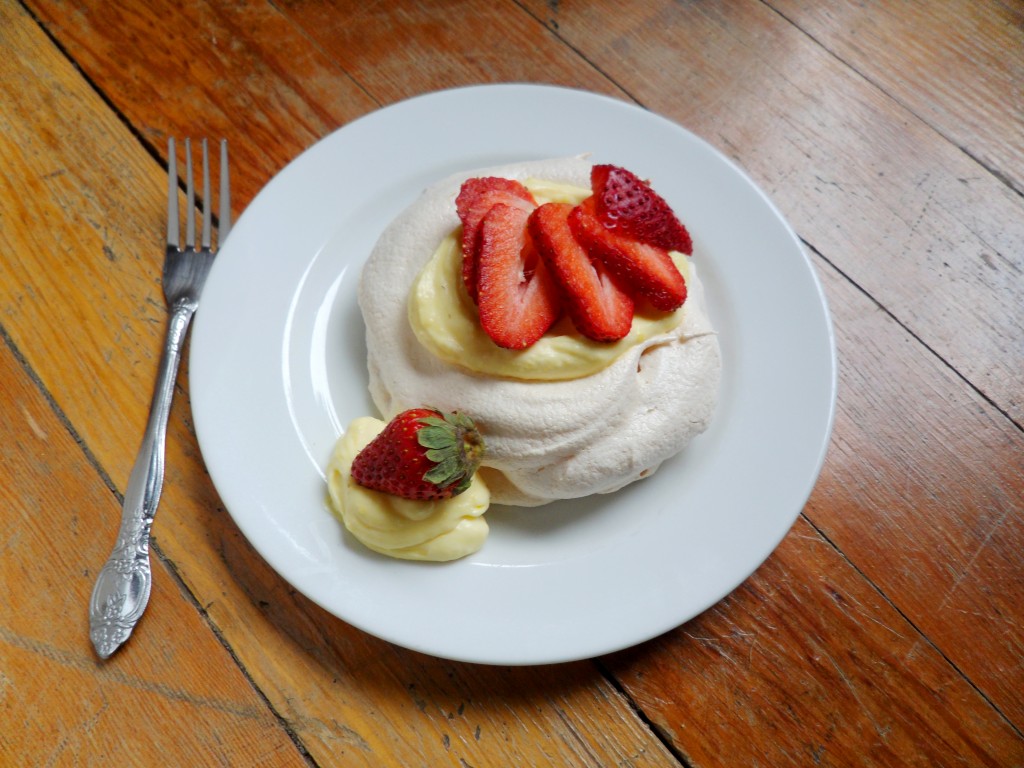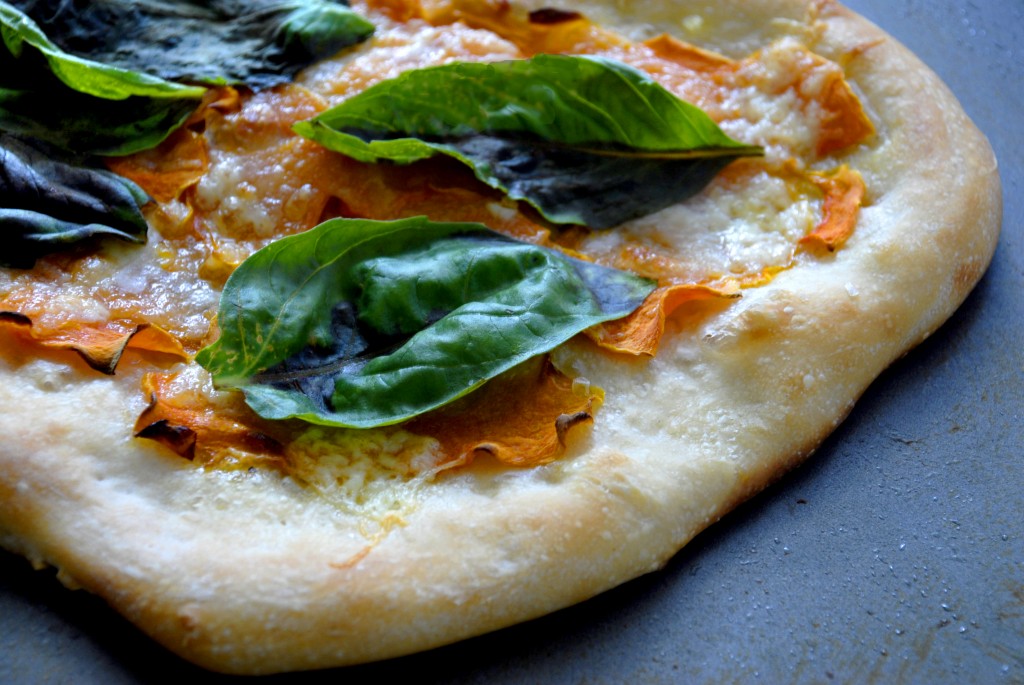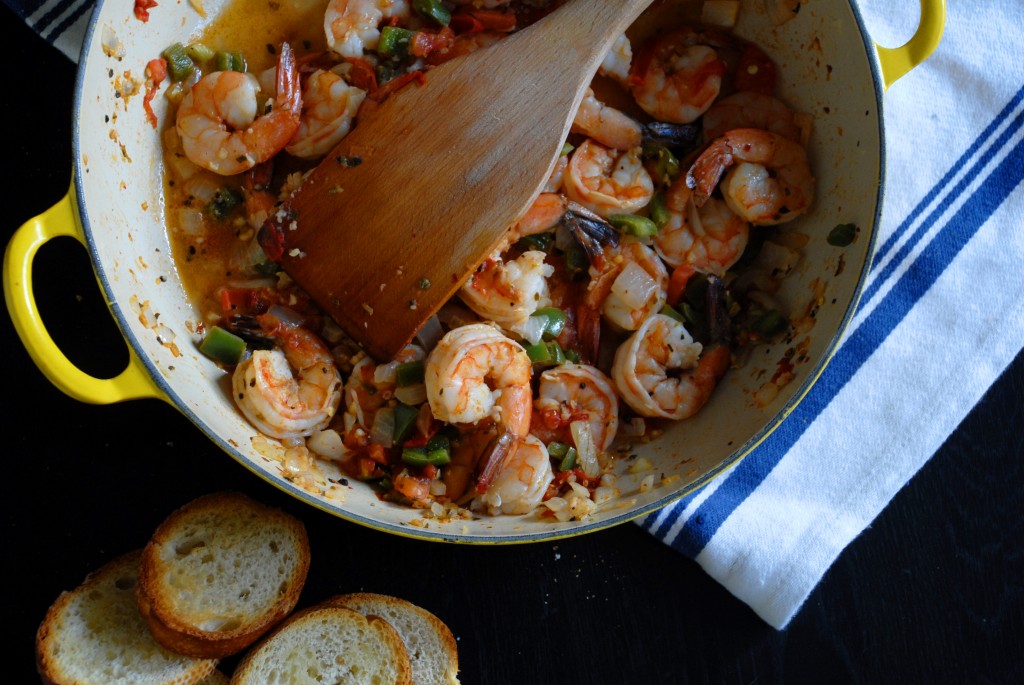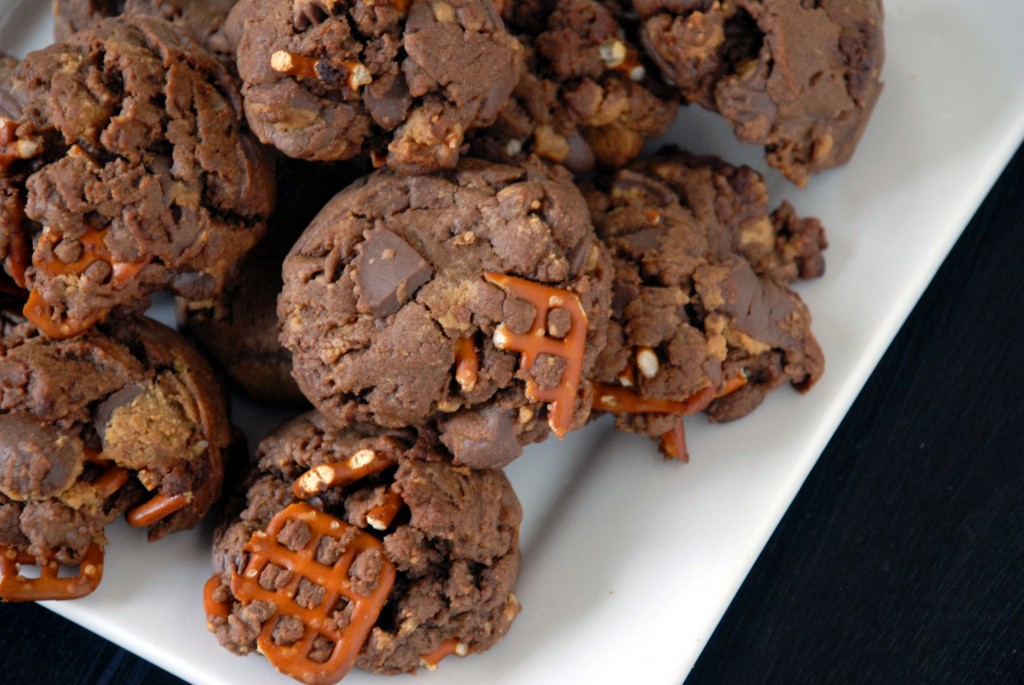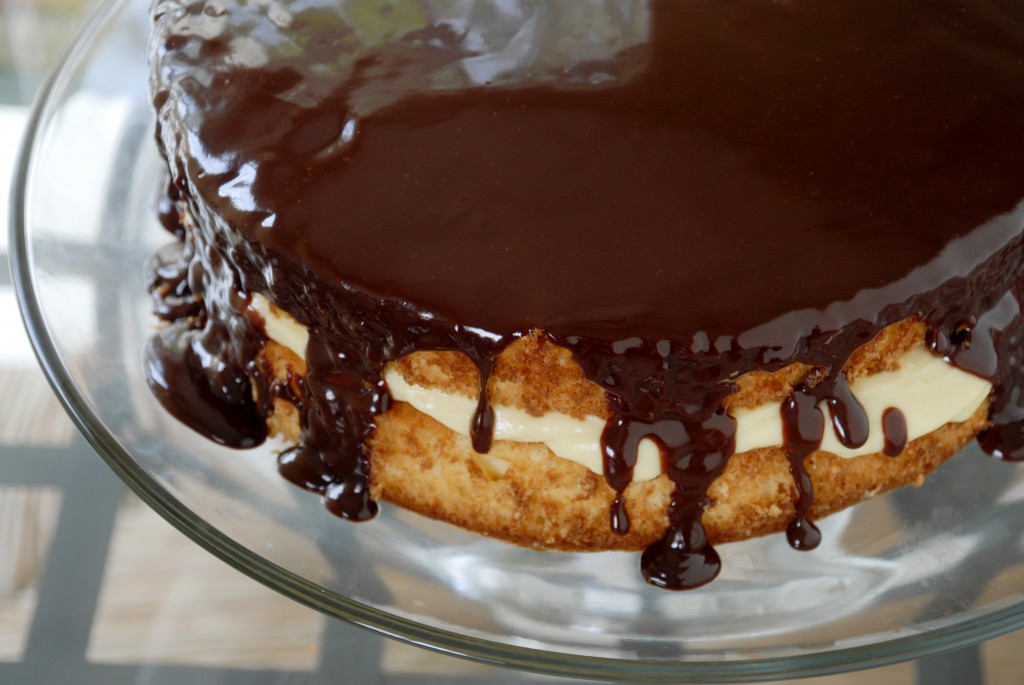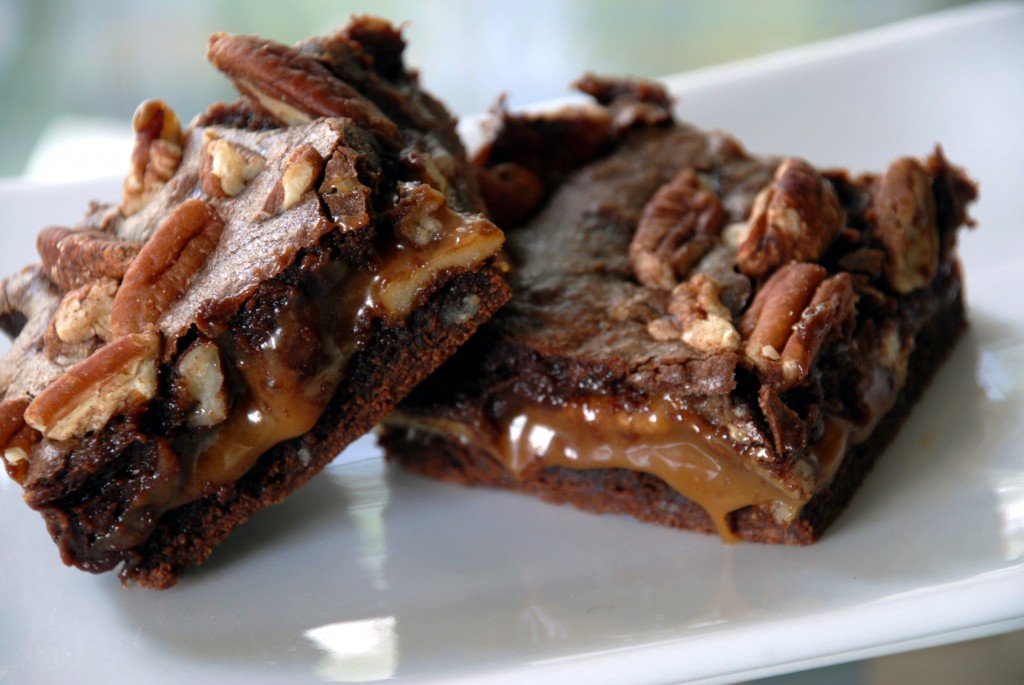Before we proceed, I need to warn you about something: Rebecca named this cake the “American Beauty Cake”…mine turned out uglier than a bug. BUT it tastes so incredible-SO incredible-that for once I don’t even care that it doesn’t look good. If you want to make it for a special occasion, either do a practice one ahead of time so you can tweak how it’s appearance or just make it and cut it into slices in the kitchen to serve to guests so that the presentation is better (like I did in the picture above, to hide how ugly mine looked as one big cake).
So…imagine this…rich, dense flourless chocolate cake…a light, milk chocolate mousse…a thick chocolate ganache on top…all frozen so that the mousse is like a fluffy ice cream. I’m not a huge chocolate person, but this cake is enough to make me a believer. It’s even better than an actual ice cream cake because the mousse is so decadent yet it’s not hard as a rock like ice cream gets. Once you taste this cake, there’s no turning back.
Now I know I’ve probably instilled the fear of the baking gods into your heart with this recipe, but truly, the point of cooking is to make something enjoyable for yourself or friends and family in the comfort of your own home and not, as much as I wish it to be true, to be a Martha Stewart incarnate and turn out perfect desserts every time. This is one of those cases where you should just do it, not worry about the little things, and then absolutely savor the amazingly delicious dessert that is about to come out of your kitchen. Now go enjoy!
American Beauty Cake
from The Pastry Queen by Rebecca Rather
Cake
- 2 sticks unsalted butter (1 cup total)
- 12 oz bittersweet chocolate, chopped (my stand by is Ghiradelli)
- 6 eggs
- 1 cup sugar
- 1 tablespoon vanilla extract
- 2 tablespoons dark rum (you really get a hit of rum in the aftertaste, so you can either leave it out or you can substitute something else in like Kahlua for coffee flavor or maybe Bailey’s Irish Cream for a more hazelnutty flavor)
Milk Chocolate Mousse
- 1/4 cup unsalted butter
- 10 oz premium milk chocolate (I used Lindt)
- 3 eggs-separated, since you’ll be whipping the egg whites by themselves later (clearly I forgot to do this or wouldn’t be emphasizing it)
- 3 tablespoons sugar
- 1 tablespoon vanilla extract
- 1 cup chilled heavy whipping cream
Dark Chocolate Glaze
- 4 oz bittersweet chocolate, chopped
- 1/4 cup light corn syrup
- 1/2 cup heavy whipping cream
- 1 1/2 teaspoons vanilla extract
Cake
- Before we get started, I’m going to warn you exactly why I think my cake turned out so un-pretty: Rebecca’s instructions basically say that you’ll bake the cake in a normal 9″ cake pan, the cake will only take up half the pan’s height, and you will fill the rest of the pan with mousse which when frozen will make a perfectly shaped round layered mousse-cake. After my cake baked, it actually rose higher than the edge of the pan and didn’t fall back down as Rebecca had promised, so there was no room for the mousse in the pan. I ended up taking my cake out of the pan, freezing the mousse in the pan separately, then plopping the cake on top of the frozen mousse, using a little leftover unfrozen mousse as glue and sticking the whole tall mess in the freezer again. To make matters worse, since I didn’t grease the pan before putting the mousse in, I was worried that it would stick to the pan and let the pan sit in boiling water for 20 seconds instead of ten, so it melted too much. So, long story short, I made it work, and I’m going to post Rebecca’s instructions as she wrote them below in case yours goes all according to plan. If not, just refer back to this giant paragraph for how to pull it together.
- Heat oven to 350 degrees. Line the bottom of a 9″ cake pan with parchment paper and spray with non-stick baking spray.
- Put a large pot with about 2″ of water in it on the stove to simmer and in a metal bowl set on top of the large pot, melt the butter and chocolate, stirring until smooth, then removing from heat. (Leave the pot of water, you’ll need it again soon)
- Whisk the eggs and sugar in a separate large bowl, then whisk the chocolate mixture into the sugar-egg mixture. Add the vanilla and rum and mix until well combined.
- Pour the batter into the prepared cake pan, place the cake pan into a large roasting pan, then carefully pour water into the bottom of the pan until it reaches about 2/3 of the way up the cake pan.
- Place cake-pan-in-water-in-roasting-pan into the oven and bake for 35-40 minutes, until firm to the touch As I noted before, Rebecca mentions it will rise while baking and then sink back down as its cooling. Cool the cake in its pan on a wire rack.
Mousse
- Heat the large pot of water on the stove to simmering again and in a large metal bowl set over the pot of water, melt the butter and milk chocolate, setting aside to cool after it’s been melted and stirred.
- Beat the eggs and sugar until well combined, stir in the vanilla, then the chocolate mixture.
- In a clean metal bowl and using an electric mixer, beat the egg whites on high speed until stiff shiny peaks form.
- Gently fold the egg whites (1/3 at a time) into the chocolate mixture with a spatula until mostly combine-it’s okay for it to be a bit lumpy still.
- In another bowl, whip the cream until soft peaks form-not any stiffer because your mousse will turn out super lumpy.
- Gently fold the cream into the chocolate-egg white mixture, and you’ll find that any of the egg white lumps will go away for a smooth mousse. It’s okay if there are a few white streaks left.
- Spread the mousse over the cooled cake in the pan, wrap tightly with plastic wrap or aluminum foil and freeze for 6 hours or more. (At this point the cake can stay frozen for 3 weeks.)
Dark Chocolate Glaze
- Note: don’t make the glaze until the cake’s been frozen for those 6 hours.
- Bring the cream, corn syrup and vanilla to a boil in a small saucepan.
- Place the chocolate into a small bowl and pour the boiling cream mixture over the chocolate. Stir until smooth.
To Assemble
- Again, this is how Rebecca wrote the recipe, but I had to go a completely different route. For the janky way, read my first paragraph above. If everything went right for you in your magical kitchen, read on:
- Remove cake from freezer and dip the bottom of the cake pan into a large pan of hot water for 10 seconds, to loosen it.
- Invert it onto a plate (that isn’t the one you want to serve it on) so that the cake part is on top and mousse is on bottom, then invert it again onto the plate you do want to serve it on so that the mousse is on top.
- Pour the glaze over the cake, spreading it onto the sides (this was hard for me, since I had a layer of melted mousse to contend with).
- Let the glaze set for 1 hour, cover with tin foil or plastic wrap again and freeze until ready to serve-it’ll melt if you just leave it out!



